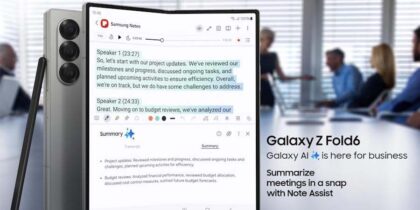Even the smallest businesses today understand the benefits of connecting their employees to office-based technology via mobile devices. For many, it’s the most effective way to increase efficiency and productivity, reduce costs and enhance customer service.
That’s especially true for companies that depend on fast, efficient, location-based service for their livelihood, such as maintenance and repair companies. While there’s plenty of work to go around — 20 percent of facilities outsource their maintenance operations, and home appliance repair is growing rapidly — maintenance and repair companies can only reach their potential by optimizing efficiency, productivity and customer service.
Many field service and maintenance companies are already improving operational efficiency by equipping team members with mobile devices that carry productivity-enhancing apps connected to back office systems. For example:
• In San Diego, Daily Disposal has increased the productivity of its trash-hauling crews and reduced costly errors by deploying apps on dashboard-mounted tablets.
• In Houston, Charlie’s Plumbing has streamlined data entry and accelerated billing with management software deployed on smartphones and tablets.
• Another Houston contractor, Absolute Drywall Service, improves work order processing, documentation and communications with a custom project management application deployed on smartphones.
• Across North America, Roto-Rooter has improved workflows, inventory management, billing and communications with companywide smartphone deployments.
Outfitting your technicians with the right mobile technology and access to the right apps can make all the difference, helping ensure faster delivery of information to installers and technicians, better customer interactions, and improved productivity, scheduling and time tracking.
Small Business Solutions for Field Services
Choosing a mobile device that has the right features for the maintenance and repair environment while keeping reliability and security in mind is the first challenge. Form factor is an obvious place to start. Should your technicians carry tablets, laptops or smartphones? A recent survey from The Service Council found that 71 percent of field service technicians use smartphones. The survey also found that 64 percent of technicians want a smartphone, while 21 percent preferred tablets and just 11 percent wanted laptops.
Any device you choose for technicians in the field should have fast mobile processors, more RAM than you think they need, and ironclad security. What can really make the difference, though, are the specific features your maintenance and repair technicians need to do their jobs. For example, if technicians spend time outdoors or in wet conditions, choosing a device that is water-resistant or works well in both direct sunlight and dimly lit conditions may be important.
Unlock the Power of Mobility for Small Business
Get your free guide to improving security and enhancing productivity with unlocked smartphones. Download Now
For technicians who spend a lot of time in remote areas that may not have reliable Wi-Fi, fast LTE speeds — more than 1Gbps if possible — are critical. Technicians who make notes in real time might benefit from a device pen. And by virtue of their work, technicians spend a lot of time on the road, making good GPS capabilities a must-have.
Troubleshooting and repairing both minor and major appliances sometimes requires a second opinion from another technician at another site or back at the office. Communicating the nature of the problem requires not only voice, text and email capabilities, but a versatile camera. To accommodate a variety of situations, look for a camera that can adapt to both bright and low light. The camera should also have optical image stabilization, which keeps photos clear even when the conditions might cause the technician to be on unstable ground when taking pictures.
Apps Make All the Difference
While the physical specs of technicians’ mobile devices are critical in providing them with the tools they need to do their jobs, these devices can be much more useful when used in conjunction with the right apps. According to The Service Council, 78 percent of field service organizations have deployed some form of mobile application for service.
The apps you choose for your technicians will depend on the degree of automation in your company, how autonomous you want your technicians to be on the job, and how connected they need to be to companywide applications and data. There are many apps with a broad array of services most useful to maintenance and repair companies, commonly called Computerized Maintenance Management Systems (CMMS). While these vary a bit in functionality, most include the following core functions:
- Inventory control
- Preventative maintenance
- Scheduling
- Service history tracking
- Technician management
- Work order management
- Invoicing
With these functions, both technicians in the field and managers in the office can check inventory to determine if a part needed to finish a job is in stock; schedule follow-up service; create customer invoices; consult the database to determine what type of preventative maintenance is due; view previous service calls on a specific machine; manage field personnel; optimize routes; integrate estimating, invoicing, work orders and inventory; and ensure the delivery of required parts and equipment. All of these functions help contribute to the overall goals of improving response times, reducing downtime, increasing productivity and cutting costs.
Clearly, technology for field services has come a long way, and it’s becoming more feature-rich and more valuable over time. According to The Service Council, for example, only 22 percent of technicians today have the ability to capture leads or opportunities with their mobile apps — but having that type of capability can help technicians generate new revenue for their companies. According to the survey, other items on field service technicians’ mobile wish lists include access to service manuals and knowledge bases, live video support and training videos. Some apps are already providing some of these features, and more are adding these types of productivity enhancements every year.
See how enterprise mobile solutions are changing the way that employees work on a daily basis.









